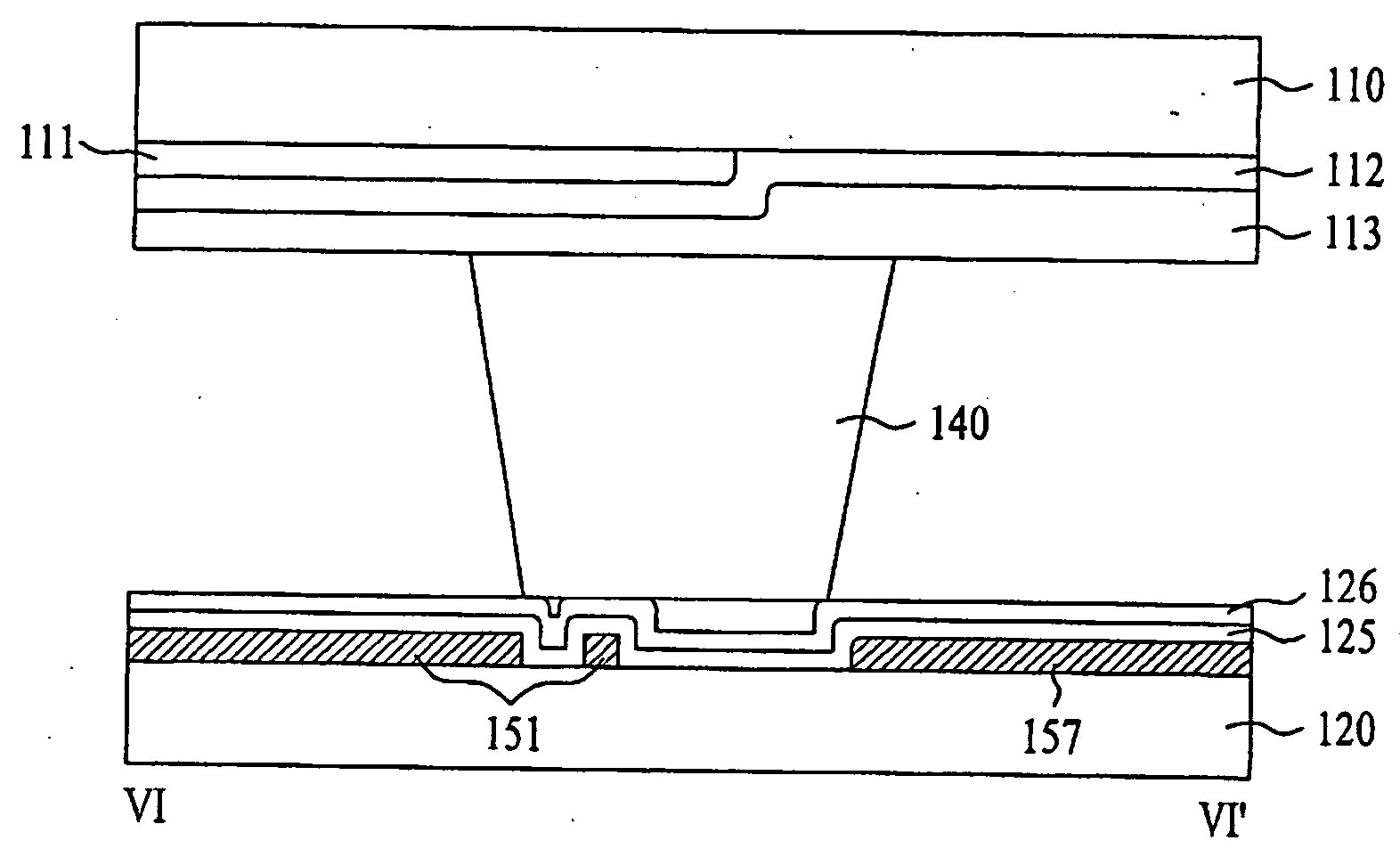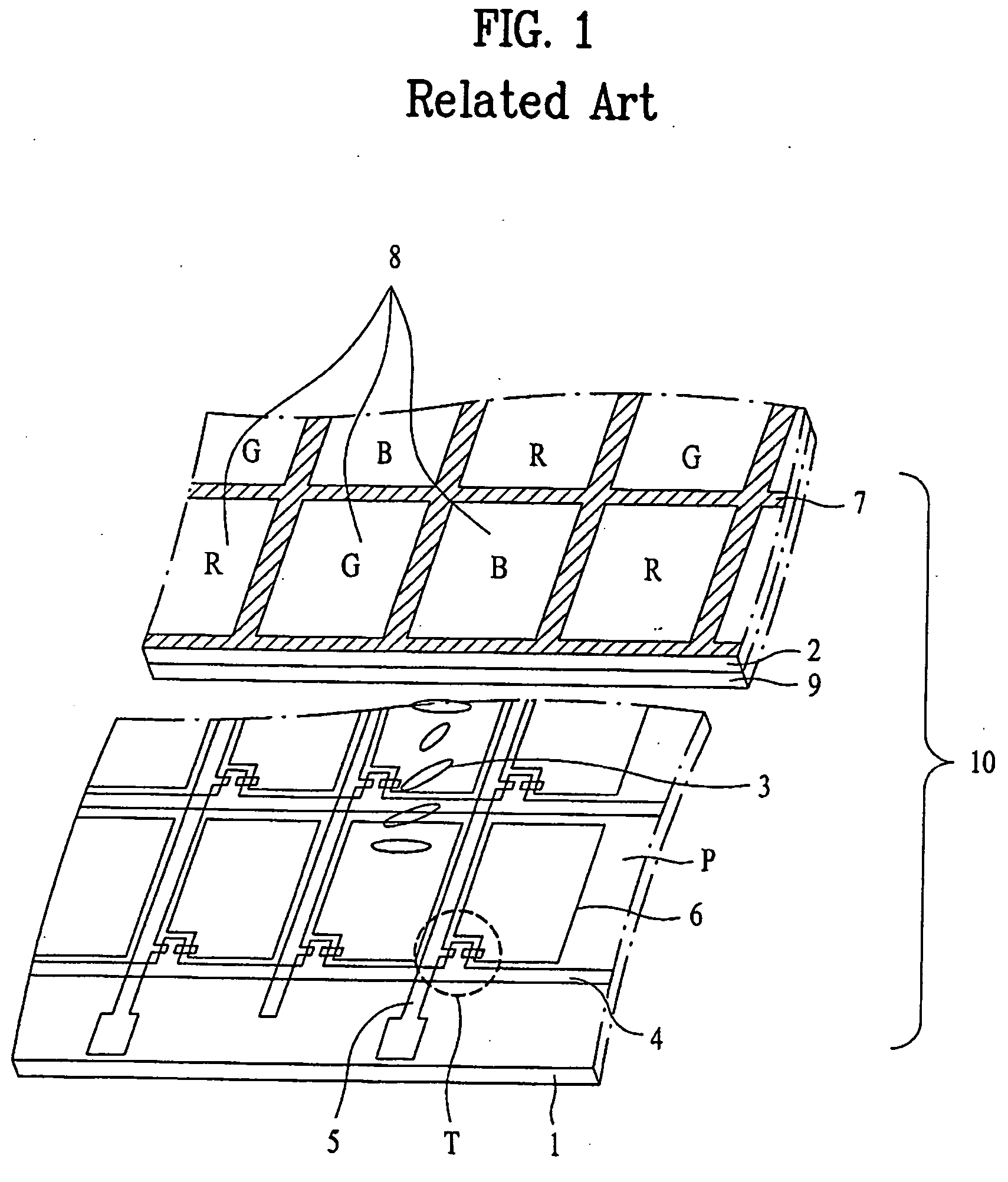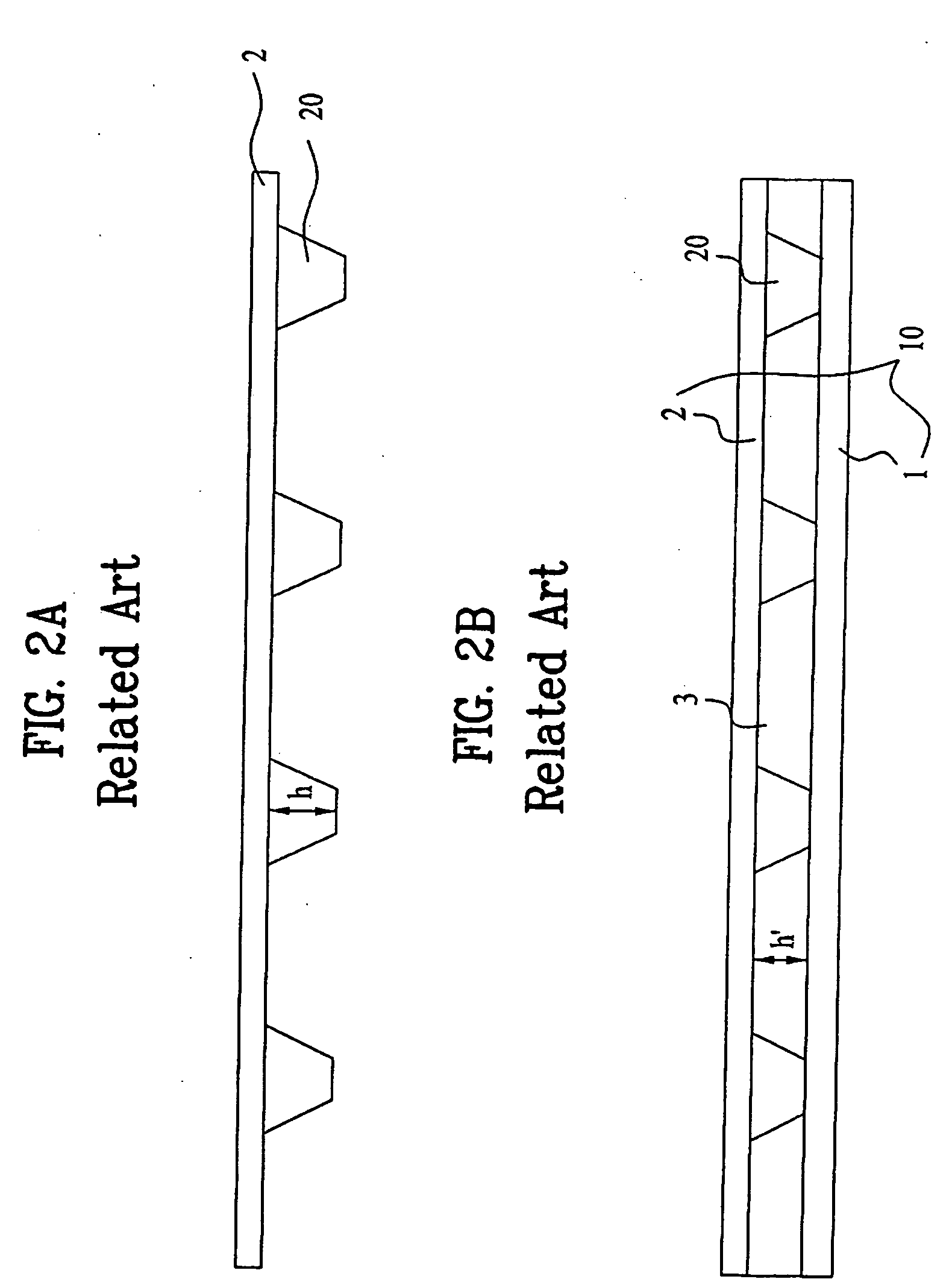Liquid crystal display device
a liquid crystal display and display device technology, applied in non-linear optics, instruments, optics, etc., can solve the problems of slow process of liquid crystal material, slow injection of liquid crystal material between the two substrates, lowering yield, etc., to reduce the variation of thickness, reduce the contact area, and reduce the effect of cell gap stability
- Summary
- Abstract
- Description
- Claims
- Application Information
AI Technical Summary
Benefits of technology
Problems solved by technology
Method used
Image
Examples
first embodiment
[0107]FIG. 10 is a plan view illustrating an LCD device according to the present invention, FIG. 11A is a structural sectional view taken along line III-III′ of FIG. 10, and FIG. 11B is a structural sectional view taken along line IV-IV′ of FIG. 10.
[0108] As shown in FIG. 10, FIG. 11A and FIG. 1B, the LCD device according to the first embodiment of the present invention includes first and second substrates 110 and 120 facing each other and bonded to each other, and a liquid crystal layer (not shown) filled between the two substrates.
[0109] In more detail, the first substrate 110 includes a black matrix layer 111 shielding light from portions (regions for gate and data lines and TFT) except for pixel regions, an R / G / B color filter layer 112 formed to correspond to the pixel regions, thereby displaying colors, and an overcoat layer 113 formed on an entire surface of the black matrix layer 111 and the color filter layer 112.
[0110] The second substrate 120 includes a plurality of gate...
second embodiment
[0137]FIG. 12 is a plan view illustrating a first column spacer of an LCD device according to the present invention.
[0138] As shown in FIG. 12, the first column spacer 140 of the LCD device according to the second embodiment of the present invention is arranged between the gate line 131 and the common line 137, which are more adjacent to each other than those of the first embodiment. The column spacer 140 is overlapped with the upper portion on the gate and common lines. In this case, to maintain the contact area between the second substrate 120 and the first column spacer 140 similarly to the first embodiment, the line width can be reduced so that the gate line 131 and the common line 137 below the first column spacer 140 can be more retracted.
third embodiment
[0139]FIG. 13 is a plan view illustrating a first column spacer of an LCD device according to the present invention, and FIG. 15 is a structural sectional view taken along line V-V′ of FIG. 13.
[0140] As shown in FIG. 13 and FIG. 15, in the LCD device according to the third embodiment of the present invention, a gate line 142 and a common line 147 are formed on a second substrate in parallel with each other. The gate line 142 and the common line 147 are respectively provided with a gate slit 142a and a common slit 147a to face each other. The first column spacer 140 is formed on the first substrate between the gate slit 142a and the common slit 147a.
[0141] At this time, the first column spacer 140 is formed on the line V-V′ of FIG. 13. That is, the first column spacer 140 is formed over the gate line 142, the gate slit 142a, the gate line, the common line 147, and the common slit 147a and the common line 147. The first column spacer 140 may be extended to the gate slit 142a and the ...
PUM
 Login to View More
Login to View More Abstract
Description
Claims
Application Information
 Login to View More
Login to View More - R&D
- Intellectual Property
- Life Sciences
- Materials
- Tech Scout
- Unparalleled Data Quality
- Higher Quality Content
- 60% Fewer Hallucinations
Browse by: Latest US Patents, China's latest patents, Technical Efficacy Thesaurus, Application Domain, Technology Topic, Popular Technical Reports.
© 2025 PatSnap. All rights reserved.Legal|Privacy policy|Modern Slavery Act Transparency Statement|Sitemap|About US| Contact US: help@patsnap.com



